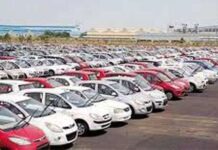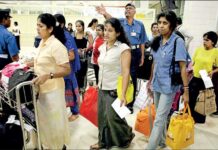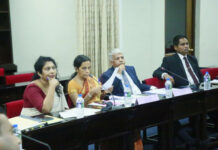Sri Lanka’s fragile post-crisis recovery faced renewed pressure in April as gross official foreign exchange reserves dropped by 205 million US dollars, sliding to 6.33 billion USD from 6.53 billion USD in March, despite market-based dollar purchases.
The decline places reserves below the October 2024 peak of 6.47 billion USD, a level reached just before the Central Bank injected liquidity to reduce call money rates. Though those expansive policies were rolled back in early 2025, unsterilized dollar purchases have continued to fuel excess liquidity, hampering the Central Bank’s ability to retain reserves over time.
Debt Repayments Straining Reserve Position
The Central Bank remains burdened by the dual responsibility of repaying its own foreign borrowings, including loans from India used during the previous currency crisis, and servicing government external debt. These repayments reduce net foreign assets, even as gross reserves fluctuate or decline.
Analysts warn that unless a strict deflationary monetary policy is maintained—keeping interest rates above market equilibrium—the Central Bank will struggle to hold on to the reserves it accumulates. A return to money printing to control rates could rekindle the cycle of forex depletion and currency depreciation.
World Bank Announces $1 Billion Support Package
Amid these pressures, Sri Lanka received a welcome boost from the World Bank, which unveiled a $1 billion recovery package following a visit by its President, Ajay Banga. The funds aim to jumpstart employment and investment in high-potential sectors such as energy, agriculture, tourism, and regional development, particularly in underserved areas like the Northern and Eastern Provinces.
“This is a moment of opportunity for Sri Lanka,” said Banga, urging the acceleration of reforms to enable private sector-led growth. President Anura Kumara Dissanayake welcomed the support, saying it will “create jobs, support small businesses, and deliver real change.”
Highlights of the package include:
-
$185 million for renewable energy, aiming to attract $800 million in private investment.
-
$100 million for agriculture modernization.
-
$200 million for tourism development.
-
$200 million for regional infrastructure and local industries.
Fiscal Metrics Show Mixed Progress
The government reported 18% growth in tax revenue to 760.7 billion rupees in the first two months of 2025, while current expenditure rose 15% to 791.3 billion rupees. However, spending is expected to rise further with salary hikes for state workers and the recruitment of 30,000 unemployed graduates—a move echoing past expansions that strained public finances.
The primary budget surplus narrowed to 328 billion rupees, while interest payments slightly rose. Capital spending fell by 34% in early 2025 due to project delays but is expected to rebound later in the year.
The overall budget deficit declined to 86.6 billion rupees, down from 129.5 billion last year, easing domestic borrowing needs.
Warnings on Monetary Policy and Systemic Risks
Economists continue to caution against cascading policy errors, where attempts to cut interest rates via money printing erode forex reserves and trigger import restrictions that slash tax revenue. Sri Lanka’s economy has historically suffered when monetary expansion outpaces productivity and external stability.
Critics argue that reliance on flexible inflation targeting and policy tools aimed at boosting theoretical “potential output” has led to repeated crises. “If monetary policy once again bends to political objectives, the gains made in reserve accumulation and fiscal discipline could unravel,” one analyst noted.



